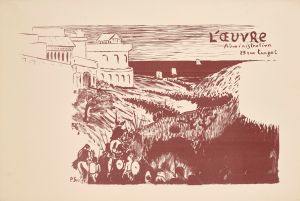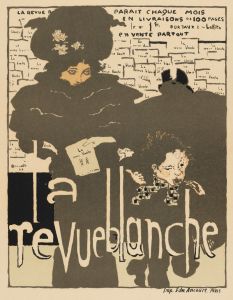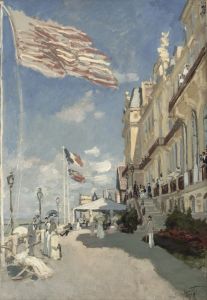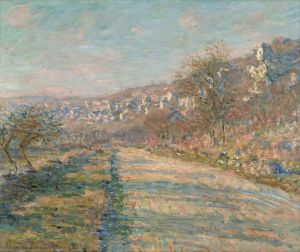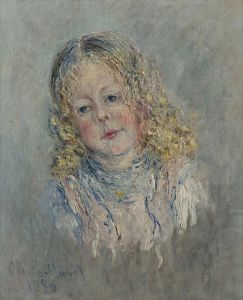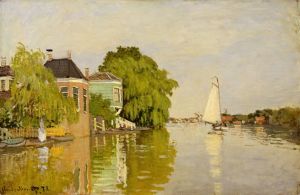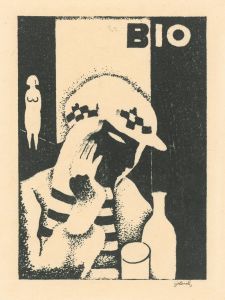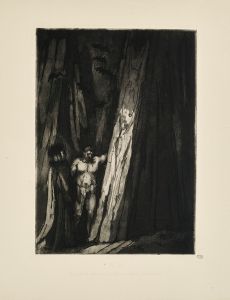
Vétheuil
A hand-painted replica of Claude Monet’s masterpiece Vétheuil, meticulously crafted by professional artists to capture the true essence of the original. Each piece is created with museum-quality canvas and rare mineral pigments, carefully painted by experienced artists with delicate brushstrokes and rich, layered colors to perfectly recreate the texture of the original artwork. Unlike machine-printed reproductions, this hand-painted version brings the painting to life, infused with the artist’s emotions and skill in every stroke. Whether for personal collection or home decoration, it instantly elevates the artistic atmosphere of any space.
Claude Monet, a pioneering figure in the Impressionist movement, painted "Vétheuil" during a prolific period of his career. This artwork is one of many that Monet created while living in the small village of Vétheuil, located along the Seine River in northern France. Monet moved to Vétheuil in 1878, and the village became a significant source of inspiration for him, offering a picturesque landscape that he captured in numerous paintings.
"Vétheuil" exemplifies Monet's dedication to capturing the transient effects of light and atmosphere, a hallmark of the Impressionist style. The painting depicts the village of Vétheuil from across the Seine, showcasing Monet's keen interest in the interplay between water, light, and the surrounding landscape. The composition is characterized by its vibrant color palette and loose brushwork, which convey a sense of immediacy and movement.
Monet's time in Vétheuil was marked by personal challenges, including financial difficulties and the illness of his wife, Camille. Despite these hardships, his work from this period is noted for its innovation and emotional depth. The paintings he produced in Vétheuil reflect a deep connection to the natural environment and a desire to capture the fleeting beauty of the world around him.
In "Vétheuil," Monet employs a technique that involves layering colors to create depth and texture. This approach allows him to depict the shimmering surface of the water and the dappled light filtering through the trees. The village itself is rendered with a sense of tranquility, nestled amidst the lush greenery and the gentle flow of the river. Monet's use of color is particularly striking, with blues, greens, and earth tones blending harmoniously to evoke a serene and idyllic scene.
Monet's work in Vétheuil laid the groundwork for his later series paintings, where he would explore the same subject under different lighting conditions and times of day. This method became a defining feature of his artistic practice, allowing him to delve deeper into the nuances of light and color.
"Vétheuil" is celebrated not only for its aesthetic qualities but also for its contribution to the development of Impressionism. Monet's ability to capture the essence of a moment and his innovative use of color and brushwork have made this painting a significant piece in the history of art. Today, "Vétheuil" is admired for its beauty and its role in advancing the Impressionist movement, reflecting Monet's enduring legacy as a master of capturing the ephemeral nature of the world around him.






